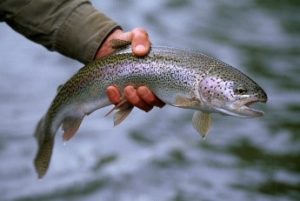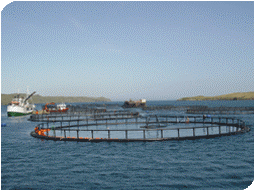Halamid® is one of the best known disinfectants for aquaculture uses, improving water quality and preventing health problems with fish and shrimp. It is commonly used in fresh water environments (with trout for example) and is progressively making its way into salt water fish and shrimp farms. 
People ask us what is the difference between fresh water and sea (or brackish) water from a disinfection point of view. When using Halamid®, there is no significant difference as long as you follow proper protocols. Other oxidative disinfectants like for example peracetic acid, break down faster in sea water than they do in fresh water. Halamid® remains effective in salt water.
There are reasons related to the setup of marine farming that may make disinfection as a whole more complicated. Sea water farming is still largely operated in open sea cages. Due to the stocking density in such cages and the exchange with wild fish, diseases can still proliferate rapidly. In this set up, there are different ways to use Halamid®. The farmer can bath the fishes by transferring them temporarily into a well boat for example, or he can limit water exchange from the cage by applying a tarpaulin.

These are costly and labour-intensive procedures but they pay out because Halamid® is efficacious, for example against Amoebic Gill Disease (AGD).
High value marine species are farmed more and more on land for what concerns the whole rearing process. Environmental aspects also play a role leading to the use of recirculation systems. In that case, water quality is easier to control as external diseases can effectively be blocked. Halamid® is used to a large extent for preventive reasons. Its toxicity is low towards most fishes and shrimps and therefore it can be applied without the risk of adverse effects (following proper protocols).
In a next press release more information about Halamid® and the biological filter in a recirculation system.